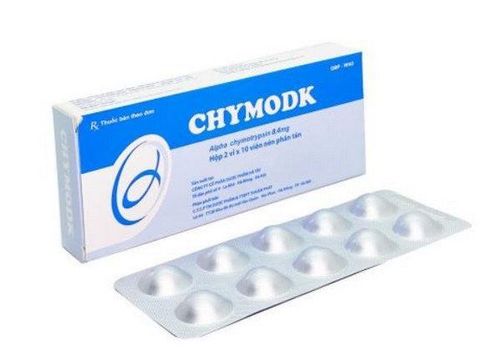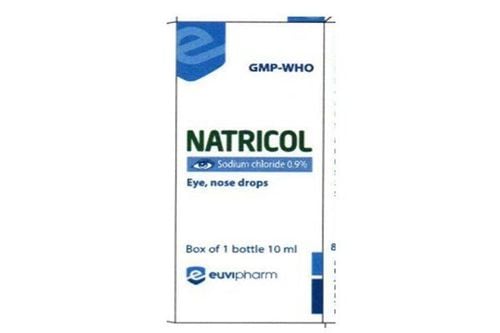This is an automatically translated article.
The article was professionally consulted by Specialist Doctor I Tran Quoc Vinh - Emergency Doctor - Department of Resuscitation - Emergency - Vinmec Nha Trang International General Hospital.1. What is diabetic retinopathy?
One of the diseases caused by a disorder of the blood vessels in the retina caused by diabetes is diabetic retinopathy (DR). In developed countries, it is the leading cause of blindness among working-age people. This disease is becoming more and more common among adults in Vietnam.Over time with diabetes, the incidence of diabetic retinopathy increases. Damage to blood vessels in the eye occurs in about 60% of patients with a diabetes duration of 15 years or more, of which 1% will be at risk of blindness.
2. What factors influence the severity of diabetic retinopathy?
The rate of diabetes in our country is increasing rapidly now: with about 200% within 10 years from 2002-2010. In most cases, little is known about the disease and its complications. Diabetic retinopathy is a condition that can affect anyone with diabetes, including both type 1 and type 2.Without good blood sugar control, people with diabetes are more likely to develop diabetes. diabetic retinopathy. In the early stages, patients with diabetic retinopathy often have no symptoms or only mild symptoms.
The disease will get worse if the patient subjectively does not go to the doctor and treat early with lesions of the fundus disease such as: retinal hemorrhage, vitreous hemorrhage, retinal detachment, macular edema, ... even is blind.
The longer the duration of diabetes and the poorer the control of the diabetes, the higher the incidence of diabetic retinopathy. In order to detect diabetic retinopathy in the early stages, people with diabetes need to see their eye doctor regularly every year.
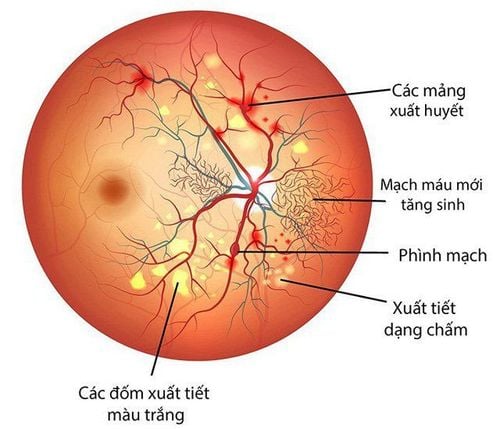
High blood pressure, high blood pressure increases the risk of blood vessel damage, especially bleeding due to rupture of blood vessels. Duration of diabetes, undetectable due to lack of regular medical examination, leading to disease progression for many years without control treatment Failure to control glycemic index such as fasting blood sugar, HbA1C Only blood fats, especially LDL-C (bad fat) Pregnant women with diabetes, need to have a separate blood sugar monitoring and control regime, such as using insulin
3. Symptoms of Diabetic Retinopathy
Diabetic retinopathy is divided into two stages, nonproliferative and proliferative. The nonproliferative phase is characterized by microvascular changes, while the proliferative phase is characterized by neovascular development in the retina.The main cause of central vision loss is macular edema, which can occur at any stage of diabetic retinopathy.
Non-proliferative diabetic retinopathy Microangiopathy, retinal hemorrhages, lipid and cotton exudates, and venous beads are all manifestations of diabetic retinopathy.
Patients often have no symptoms, nor cause pain, only detected through fundus examination with dilated pupils through which retinal imaging in the stage of diabetic retinopathy.
As the disease progresses, the patient's vision is affected, vision is greatly reduced if there is macular edema. Typical signs as the disease progresses, include:
Blurred vision Can see black dots or flies Can see two images of an object Painful eyes Symptoms of macular edema: central image recognition of vision, having trouble reading, seeing dark spots in the center of the eye.

It is important to have regular retinal screening tests because proliferative retinopathy can develop without causing symptoms. Bleeding or retinal detachment can cause a number of symptoms such as:
Sudden appearance of floats in the field of vision Distorted vision Loss of vision
4. Treatment of Diabetic Retinopathy
Controlling blood sugar, blood pressure and blood cholesterol levels is very important for the aggressive treatment of diabetes. Diabetic retinopathy (diabetes) is a complication of diabetes that is constant, especially when blood sugar levels are not controlled. Therefore, patients need to be monitored and treated promptly.Treatment of non-proliferative diabetic retinopathy Patients should have an eye exam 5 years after the diagnosis of type 1 diabetes. If you have type 2 diabetes, you need to see a doctor as soon as you find out. Patients with diabetes need to have their eyes checked every 3 months. Routine eye examination every 6 months to 1 year if diabetic retinopathy has not been detected Usually laser photocoagulation is not required for patients with non-proliferative diabetes, unless the disease cannot be monitored regularly, especially vision loss in the other eye due to complications of proliferative diabetic retinopathy.
Diabetics often develop cataracts at an earlier age because People with diabetes tend to develop cataracts earlier and may be more susceptible to developing posterior subcapsular cataracts other patients.
Evaluation of the patient's visual acuity and fundus pathology with degree of cataract should be performed.
Careful retinal examination is needed for the cause of vision loss if the patient has extensive visual impairment associated with mild cataracts.
Cataract surgery helps diabetics improve vision and see the fundus easier, but after cataract surgery some cases of diabetic retinopathy may progress faster, macular edema score and difficult to predict postoperative visual acuity.
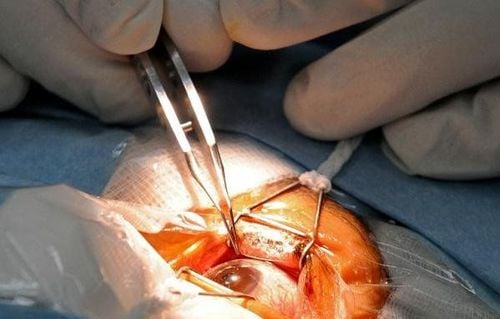
Treatment of proliferative diabetic retinopathy Periodic examination by doctor's appointment from 1 to 3 months for patients with pre-proliferative diabetic retinopathy, or who have been temporarily stabilized on treatment.
Preserving vision by inhibiting neovascularization and preventing further proliferation is the primary goal of proliferative diabetic retinopathy treatment.
Laser treatment Laser treatment reduces the production of angiogenic factors, improves the oxidation of the ischemic inner retinal layers through the thinning effect on the retina or the formation of chorioretinal junctions; induce neovascularization inhibitory factors by altering the pigment epithelium.
Total retinal laser treatment helps prevent progression of diabetic retinopathy and reduces the risk of severe vision loss from proliferative diabetic retinopathy.
One of the indications for total retinal laser treatment includes iris neovascularization or anterior chamber angle, which is a sign of severe retinal ischemia. With total retinal laser treatment, iris neovascularization may regress.
It is still possible to laser treatment of the whole retina if neovascular glaucoma is present because anterior angle neovascular regression (due to laser treatment) may improve the effectiveness of subsequent surgery for glaucoma.
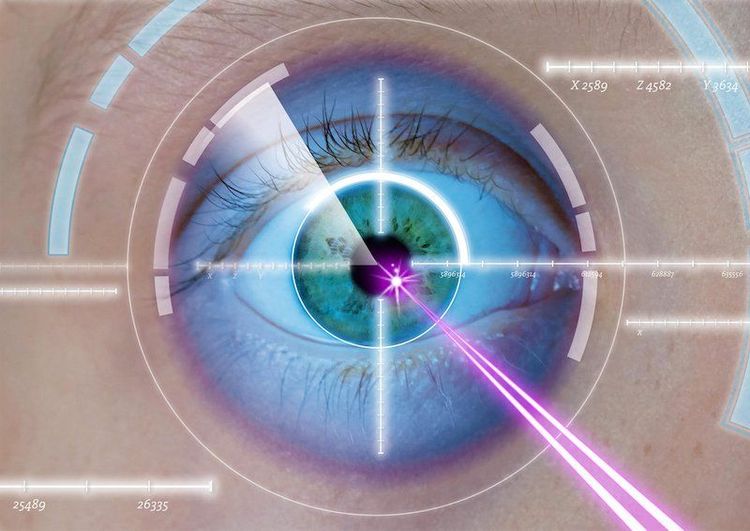
Temporary decrease in central vision in the first few weeks Complications macular edema increase: localized laser treatment of macular edema before laser the entire retina in divided doses to prevent this complication. Reduced visual acuity at night Narrow peripheral field of view Decreased color discrimination Temporarily ataxia, dazzle, transient pain, exudative retinal detachment, increased intraocular pressure, risk of macular detachment, increased muscle retinal detachment This method is indicated when the optical environment of the eye is cloudy (cataracts, vitreous hemorrhage) or the patient is too weak to tolerate vitrectomy, to remove the retinal area. ischemic fascia requires transscleral freezing behind the ciliary body. Anterior and posterior partial neovascular regression can be achieved by freezing.
Vitrectomy Vitrectomy is indicated in diabetic retinopathy in the following cases:
Vitreous hemorrhage that does not dissolve after 4 weeks. Invasion or threat of macula due to traction retinal detachment Traction and tearing retinal detachment Even though the entire retina has been lasered, neonatal vascular hyperplasia continues to progress, and vision loss due to traction macular. To deal with diabetic retinopathy, patients should seek out reputable medical facilities for diagnostic and treatment methods.
Vinmec International General Hospital is one of the hospitals that not only ensures professional quality with a team of leading medical doctors, modern equipment and technology, but also stands out for its examination and consultation services. comprehensive and professional medical consultation and treatment; civilized, polite, safe and sterile medical examination and treatment space.
Please dial HOTLINE for more information or register for an appointment HERE. Download MyVinmec app to make appointments faster and to manage your bookings easily.





